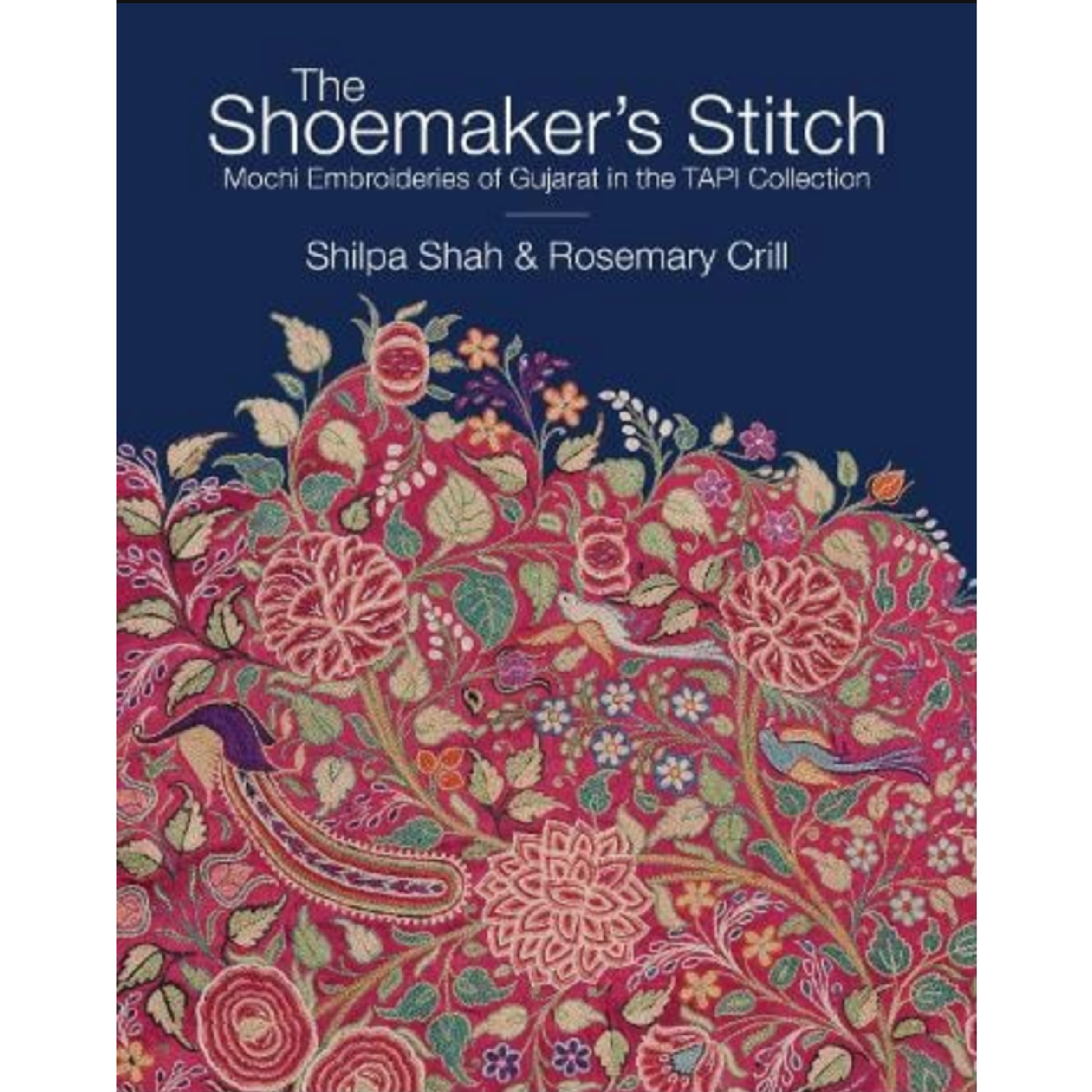The Shoemaker's Stitch: Mochi Embroideries of Gujarat in the TAPI Collection
Purchase this book from our partner site here.
By Shilpa Shah and Rosemary Crill, Niyogi Books
Chain stitch embroidery is practiced in Gujarat western India by the Mochi community who traditionally make shoes known locally as mojris. The embroidery is done with an awl using wool or cotton thread on leather. The technique evolved and was used in a finer form on silk and cotton cloth–examples of this now languishing craft are presented in the book.
The book is divided into sections and has essays by Rosemary Crill and Shilpa Shah. A section is devoted to illustrations and plates of pieces from collections including the TAPI, the MSME museum Jaipur, Aina mahal, Shrujan LLDC, Prag mahal archive, and other private collections. The illustrations include fine examples of floor spreads, skirts, palampores, bedcovers, hangings, bodices, fans, and doorway panels. The Ghaghra (skirt) and Kanchli (bodice) are the most prolific with fine stitches and beautiful motifs. A number of previously unpublished pieces are illustrated. Beautiful floral motifs are seen alongside those of animals and religious motifs.
Three appendices in the book detail prominent mochi artisans from Kutch, women embroiderers and notes from an account book of an embroidery shop. The information presented is authenticated through discussions with textile experts and organisations working with master embroiderers. Also seen in the book are fine examples of religious textiles which include Pichvais and book covers of Jain manuscripts. Across India it is a common misconception that women did embroideries only for domestic purposes in the confines of their homes. This is refuted eloquently in the book and names of some women who practiced embroidery commercially are mentioned here. The negotiations and trade relating to these pieces were conducted by men. A discussion on motifs and their symbolism would have been a valuable addition for scholars as would a glossary specially for an international audience, as well as more description of the plates, as many stories unfold.
The book brings to life finely executed pieces through beautiful photography. These are specially useful for scholars. The book offers an exclusive collection of previously unpublished images and presents a detailed account of the embroidery as a monograph. Through this study Shilpa Shah and Rosemary Crill say they “pay tribute to the unnamed masters of a class of exquisite, regional stitch craft known as mochi bharat, embroidery created by Mochis.”
••• Dr. Vandana Bhandari
Share


